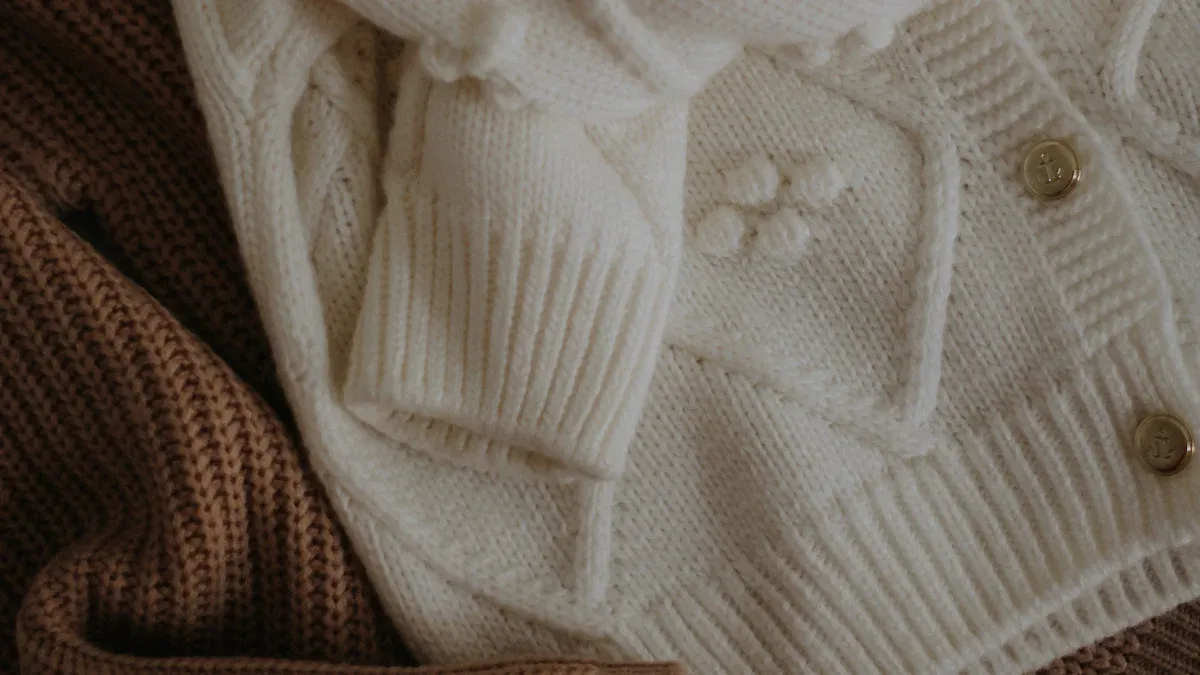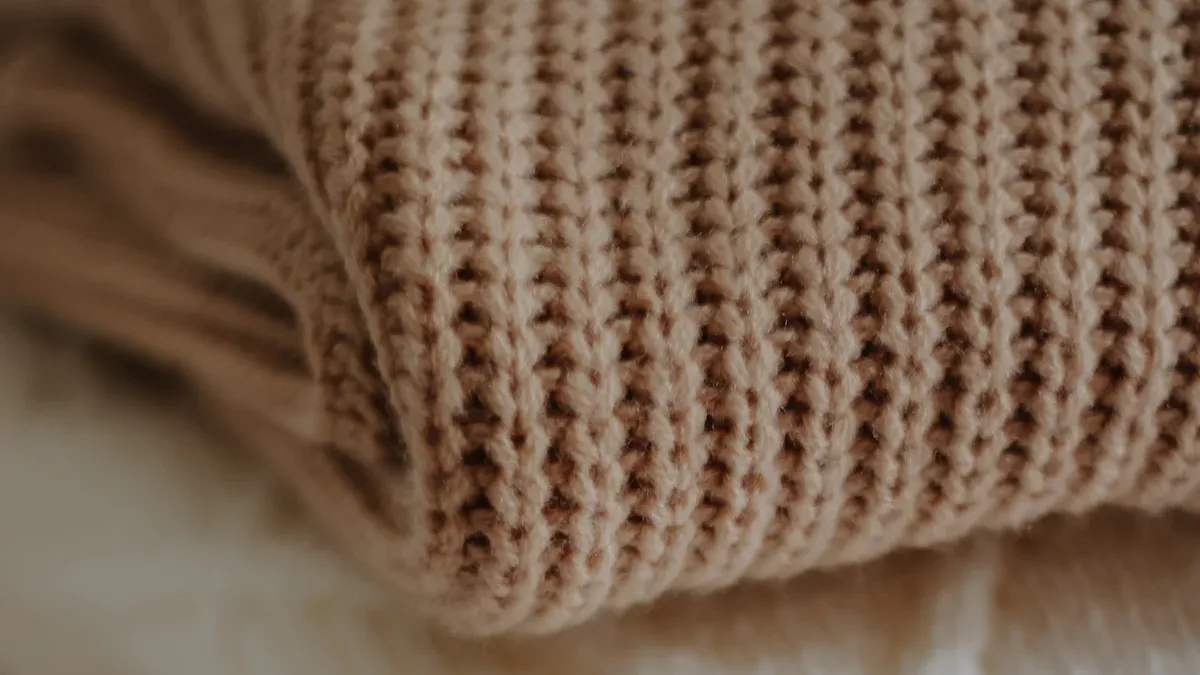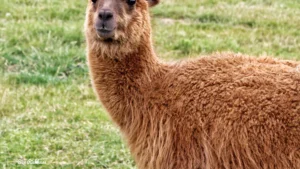
If you want to stay extra warm, a lambswool cable knit sweater is usually a better choice than a merino one. The fibers in a lambswool cable knit sweater trap more air, which helps retain heat more effectively. While merino wool is soft and helps regulate your body temperature, a lambswool cable knit sweater will keep you warmer for longer periods. Some people prefer merino for its smoother feel, but if warmth is your priority on cold days, a lambswool cable knit sweater is an excellent option. Wool can sometimes feel itchy, but both lambswool and merino offer different levels of comfort. Choose the one that feels best for you.
Key Takeaways
Lambswool sweaters hold in more heat and feel thicker. They are warmer for very cold days. Merino wool sweaters feel softer and smoother. They are good for people with sensitive skin. They are also good for those who want light comfort. Both lambswool and merino wool use cable knit patterns. These patterns trap air and help keep you warm. Lambswool gives stronger insulation. Taking care of both types is important. Hand wash lambswool sweaters. Use gentle washing for merino wool sweaters. This helps sweaters last longer. Pick lambswool for the most warmth and layering. Choose merino for softness, breathability, and daily wear.
Lambswool vs Merino Wool Warmth

Insulation
When you compare lambswool vs merino wool, you notice both types offer impressive warmth, but they do so in different ways. Lambswool cable knit sweaters use fibers with a diameter around 18.5 microns. This fine diameter makes the yarn soft and helps trap more air. The trapped air acts as insulation, keeping you warmer. The woollen-spun construction of lambswool creates a bulkier yarn with greater loft. This bulkiness means your sweater feels thicker and sturdier, which adds to its ability to keep you warm.
Merino wool also has a fine fiber diameter, usually between 15 and 24 microns. The fine fibers make merino soft and comfortable. Merino wool traps heat well, but it does so with less bulk. The crimp in merino fibers forms tiny air pockets. These pockets hold warm air close to your body. Merino’s lightweight warmth works well if you want insulation without feeling weighed down.
If you want maximum warmth, a lambswool cable knit sweater gives you a thicker, cozier feel. Merino wool keeps you warm too, but it focuses more on lightweight comfort and temperature regulation.
Cable Knit Construction
The cable knit pattern plays a big role in the warmth of both lambswool and merino sweaters. The raised cables create extra layers and pockets of air. These pockets boost the insulating power of the wool. When you look at lambswool vs merino, both benefit from this construction, but the effect is stronger with lambswool because of its bulkier yarn.
The crimped structure of wool fibers traps air, creating natural insulation.
Merino wool’s fine, crimped fibers give you lightweight warmth and excellent insulation without much bulk.
Lambswool fibers are thicker and have more bulk, so they offer robust insulation and a heavier feel.
Both types rely on the crimp to keep air pockets in place, but lambswool sweaters feel warmer and sturdier.
In the world of knitwear, the cable knit design works with the natural properties of wool to keep you warm. Lambswool vs merino wool sweaters both use this to their advantage, but lambswool cable knit sweater stands out for maximum warmth. Merino sweaters give you warmth with less weight, making them a good choice if you want something lighter.
When you choose between lambswool vs merino, think about how much warmth you need and how heavy you want your sweater to feel. Both types of wool use their fiber structure and cable knit construction to trap heat, but lambswool gives you the warmest option for cold days.
Key Differences in Feel

Which Is Softer
When you pick a sweater, you want it to feel soft. The softness of wool depends on how thick the fibers are. This is called the micron count. If the micron number is lower, the fibers are softer. Merino wool is known for having very fine fibers. Most merino fibers are about 21.5 microns. Some superfine merino fibers are as low as 15 microns. Lambswool fibers are thicker, usually about 27 microns. This makes lambswool feel a little rougher.
Here is a quick comparison to help you see the key differences:
Attribute | Lambswool | Merino Wool |
|---|---|---|
Fiber Diameter | Around 27 microns | Average ~21.5 microns; superfine 15-18.5 microns |
Softness | Soft but coarser and slightly itchier | Finer, softer, comparable to cashmere |
Typical Use | Outerwear, described as a ‘soft knot’ | Versatile, preferred for next-to-skin garments |
If you want the softest sweater, merino is the winner. Merino sweaters feel gentle and smooth on your skin. Lambswool is still soft, but it has more texture. Many people pick merino for wearing close to their skin.
Itchiness
Itchiness can ruin how you feel in a sweater. The main reason for itchiness is fiber thickness. Wool fibers over 24 microns can feel prickly. Lambswool has thicker fibers, so it can feel itchy. This is true if you have sensitive skin. Even a few thick fibers can bother you.
Merino wool has finer fibers in a smaller range. This means it feels less prickly and more comfy. You can wear merino sweaters all day and not feel itchy. If you want a sweater that feels soft and nice, merino is the best choice. Lambswool is warm, but merino is better for comfort if your skin is sensitive.
Lambswool Cable Knit Sweater Comfort
Breathability
You want a sweater that keeps you warm but does not make you overheat. Lambswool gives you this balance. The fibers in lambswool have a natural crimp. This crimp creates tiny air pockets in the yarn. These pockets let air move through the sweater. You feel warm, but your skin can still breathe. When you wear a lambswool cable knit sweater, you notice the air flows in and out. This helps you stay comfortable, even if the weather changes.
The cable knit pattern adds to this effect. The raised cables and open spaces in the knit allow more airflow. You do not feel trapped or sweaty. Instead, you get a cozy layer that works with your body. Many people choose lambswool for its soft texture and breathability. You can wear it indoors or outside and still feel good.
Moisture Management
Staying dry is important for comfort. Wool fibers, including lambswool, can absorb moisture without feeling wet. This means sweat and dampness move away from your skin. You stay dry and warm at the same time. Here are some reasons why lambswool helps with moisture:
Wool fibers pull moisture away from your skin.
The sweater does not feel wet, even if you sweat.
You stay comfortable for longer periods.
Merino wool is famous for its soft feel and strong moisture-wicking ability. Lambswool also offers these benefits, though it feels a bit thicker. Both types of wool keep you dry, but lambswool gives you a sturdy, cozy feel. You get exceptional comfort when you wear a lambswool sweater in cool or damp weather.
If you want a sweater that manages moisture and feels soft, lambswool is a smart choice. You enjoy comfort all day, whether you are active or relaxing.
Lambswool vs Merino Durability
Longevity
When you compare lambswool vs merino wool, you notice differences in durability. Lambswool gives you a sweater that feels thick and warm, but it is more delicate than you might expect. The fibers in lambswool are soft and lofty, which makes them prone to pilling and stretching if you do not handle them with care. If you wash lambswool the wrong way, the fibers can break down quickly. This reduces the lifespan of your sweater.
Merino wool offers a bit more resilience. The fibers in merino are finer, but they have a natural elasticity. This helps merino sweaters keep their shape longer, even after many wears. Merino wool can handle gentle machine washing if the care label allows it, but you still need to be careful. Both types of wool can last for years if you treat them well, but lambswool is more sensitive to rough handling and heat. If you want maximum durability, you need to pay close attention to how you care for your wool sweaters.
Tip: Improper washing, such as using hot water or twisting the fabric, can cause both lambswool and merino sweaters to shrink, lose shape, or develop bobbles. Lambswool is especially sensitive to these mistakes.
Care
To keep your wool sweaters looking their best, you should follow these care steps:
Prefer hand washing with mild detergent or use a gentle machine cycle with cool water if allowed.
Avoid bleach and fabric softeners.
Gently wring out excess water without twisting.
Lay flat to dry; never hang to prevent stretching.
Keep away from high heat, such as dryers or direct sunlight.
Store in a cool, dry place and avoid plastic bags.
Brush or comb your sweater regularly to remove dust and pilling.
Spot clean when possible and avoid over-washing.
Seek professional cleaning if needed.
Lambswool needs extra care. Never machine wash or tumble dry lambswool, as this can ruin the fibers. Merino wool is a bit more forgiving, but you should still use cold water and gentle cycles. Both types of wool require careful handling to maintain their durability. If you treat your sweaters well, you will enjoy their warmth and comfort for many seasons.
Choosing the Best
Everyday Use
If you want a sweater for every day, look for one that feels soft. Merino wool is smooth and gentle. You can wear merino all day and not feel itchy. The fibers are thin, so they bend and do not bother your skin. Lambswool can work too, but it may feel rougher. This is true if your skin is sensitive.
Here is a table to help you see how each wool is best used:
Factor | Merino Wool | Lambswool |
|---|---|---|
Softness | Very soft, gentle on skin | Soft but more textured |
Itchiness | Rarely itchy | Can be itchy for some people |
Warmth | Warm, lightweight | Warmer, heavier |
Breathability | Excellent | Good |
Durability | Keeps shape well | May pill over time |
Tip: If you want a warm and comfy sweater for school or work, merino is a good pick for every day.
Sensitive Skin
If your skin is sensitive, you need to pick the right wool. Merino wool is best for comfort and soft on skin. The fine fibers feel smooth, so you can wear them close to your body. Merino lets your skin breathe and keeps sweat away. This makes you feel even better. Lambswool is not always the same. Some people think it is itchy, especially if their skin does not like rough fabrics.
It helps stop itching for people with sensitive skin.
Merino’s breathability gives extra comfort.
Maximum Warmth
If you want the warmest sweater, lambswool is a good choice. The thick fibers hold more air, so you stay warmer in cold weather. Lambswool sweaters feel heavy and keep heat in well. Merino wool is warm too, but it is lighter and lets air move through. Outdoor experts say merino is great for layering and being active. Lambswool is best when you want to stay warm in freezing weather.
Note: Lambswool is great for layering on very cold days. Merino is better for outdoor fun and moving around.
Pick the wool that fits your needs. For daily comfort, choose merino. For the most warmth, go with lambswool. If your skin is sensitive, merino is safest. Both types of sweaters have special benefits, so choose what works for your life.
Lambswool cable knit sweaters keep you warmer because their thick fibers trap more heat. Merino wool feels softer and smoother, making it a better choice if you have sensitive skin. Reviews often rate merino as more comfortable for direct wear. Lambswool works well for layering and maximum warmth. Both types breathe well and last if you care for them. Choose lambswool for warmth or merino for softness and comfort. Think about your needs before you decide.
FAQ
Is lambswool or merino wool better for people with allergies?
You may find merino wool better if you have sensitive skin or allergies. Merino fibers are finer and less likely to cause itching. Always check for any reactions before wearing a new sweater.
Can you machine wash lambswool or merino wool sweaters?
You should hand wash lambswool sweaters. Merino wool can sometimes go in the washing machine on a gentle cycle, but always check the care label first. Hot water or rough washing can damage both types.
Which sweater lasts longer, lambswool or merino wool?
Merino wool sweaters usually last longer. The fibers have more elasticity, so they keep their shape better. Lambswool feels soft and warm, but it can pill or stretch if you do not care for it properly.
Do lambswool and merino wool sweaters shrink easily?
Both types can shrink if you use hot water or a dryer.
Always wash in cool water and lay flat to dry.
Proper care helps your sweater keep its size and shape.









